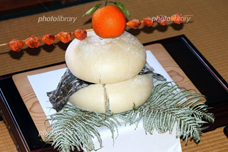Memories of Kagami Mochi

Since I was a child, my father and I used to pound rice in a mortar for the family. I was actually an athletic girl with grip strength. Naturally, my family’s kagami mochi was homemade, but later for some time I was taken care of by the mochi-making machine.
I have many memories for Kagami mochi. I had presented to Tamae a founding member of Kyo-Suzume, who was a college student at the time, I had presented Kagami Mochi to celebrate her marriage with American Michael.
It was about 15 years ago. A cloth kagami mochi that can be used for many years. She got married and went to the United States with a full-fledged kagami mochi that had a traditional shape. In the New Year, Toshigami will be welcoming to their home, following the Japanese tradition in the United States.
It’s hard to return to Japan because of the corona, but even if she lives like far away in the United States, she doesn’t forget the traditions and customs of Japan. In Kyoto, there are many places that treats the Kagami mochi hiraki on January 15th, and sending the Toshigami who was greeted on New Year’s Day is also same meening for the treating of the Kagami mochi hiraki. Eating the kagami mochi that was offered to God has the same meaning as Naorai. It has been thought that receiving a piece of rice cake has the same meaning as receiving the power of God.
Around the same 15th, there is an event called “Otakiage”, but just like Kagami-biraki, a fire festival is held to bake shimenawa, kakizome, kadomatsu, old bills, etc. This was also done on January 15th, the day of the full moon.
It seems that it has been held since the Heian period even in the palace. In Kyoto, it was called “Dondoyaki”, but now it is done at shrines and other places. The 15th is also called the First Full Moon Festival, and it is customary to have patjuk. The New Year of the lunar calendar is the current January 15th. Enjoy a series of New Year’s events.
